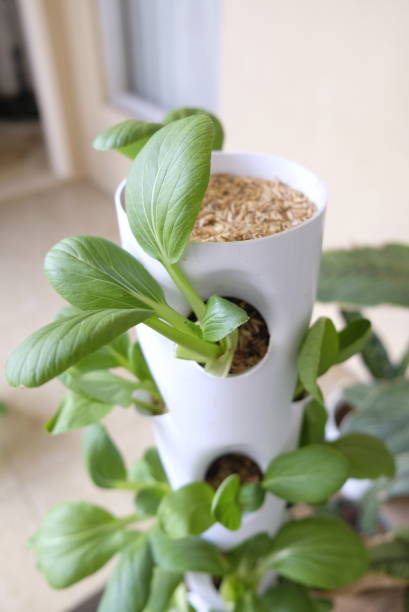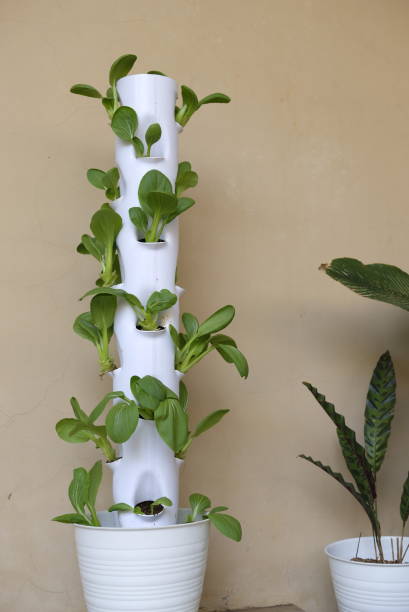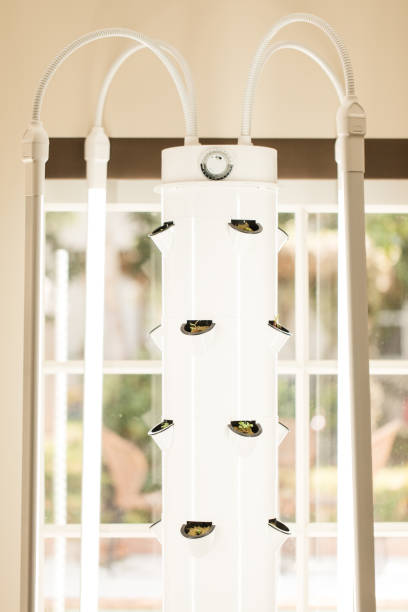Embarking on the journey from tiny seed to vigorous sprout is a thrilling endeavor for any home gardener. Seed germination is the critical first step in ensuring healthy, productive plants, whether you’re working with traditional soil beds or exploring the innovative world of hydroponics. By understanding the biological processes that trigger germination, and applying best practices tailored to a hydroponic tower garden, you can dramatically improve your success rate and enjoy abundant, nutrient-rich harvests right in your own home. This comprehensive guide delves into the science of germination, offers practical tips for optimizing conditions, and provides solutions to common challenges—empowering you to cultivate your garden with confidence and precision.
Understanding the Science of Seed Germination
Germination marks the beginning of a plant’s life cycle, when a dormant seed absorbs water, swells, and activates the metabolic pathways necessary for growth. This process transforms stored energy within the seed into the building blocks for roots, shoots, and leaves.
Key Factors Influencing Germination
Successful germination hinges on four primary factors:
- Moisture: Seeds require ample water to rehydrate tissues and dissolve stored nutrients.
- Temperature: Optimal warmth accelerates enzyme activity; most vegetable seeds germinate best between 18–24 °C (65–75 °F).
- Oxygen: Aerobic respiration fuels the energy needs of the emerging seedling; compacted or waterlogged media can suffocate seeds.
- Light or Darkness: While some seeds germinate in darkness, others—like lettuce or petunia—need light to trigger sprouting.
Balancing these elements creates an environment where seeds can transition from dormancy to vigorous growth.
Phases of Germination
There are three distinct phases:
- Imbibition: Rapid water uptake by the seed coat, causing expansion and cracking.
- Enzymatic Activation: Hydrolytic enzymes break down stored starches and proteins into sugars and amino acids for fuel.
- Radicle Emergence: The embryonic root (radicle) pierces the seed coat, anchoring the seedling and facilitating nutrient uptake.
Recognizing these stages helps you adjust conditions—such as humidity and temperature—to support each critical transition.

Optimizing Seed Germination in a Hydroponic Tower Garden
Hydroponic tower gardens offer space-saving vertical cultivation and accelerated growth rates. However, the switch from soil to a soilless system demands careful attention to the germination phase to ensure seedlings thrive once transferred.
Selecting the Right Seeds and Growing Media
For hydroponic germination, choose high-germination-rate seeds from reputable suppliers. Opt for rockwool cubes, coco coir plugs, or peat pellets as your growing medium—each provides stable support, moisture retention, and easy transplanting into net pots. Pre-soak rockwool in pH-adjusted water (5.5–6.5) to optimize nutrient uptake during early growth.
Creating the Ideal Germination Environment
Replicate a greenhouse-like microclimate by placing trays under a humidity dome and maintaining consistent warmth (around 22 °C). Use a gentle germination light—such as a fluorescent or low-intensity LED—to provide the necessary photoperiod without overheating. Monitor moisture levels, misting lightly to keep the medium damp but not waterlogged, and ensure adequate ventilation to prevent mold growth.
Troubleshooting Common Germination Challenges
Even seasoned growers encounter obstacles during seed germination. Identifying and remedying issues early can save valuable time and seed stock.
Slow or Uneven Germination
If seeds sprout at different rates or not at all, consider:
- Pre-soaking: Briefly soak tougher seeds (e.g., beans, peas) in lukewarm water for 6–12 hours to soften the seed coat.
- Stratification: For cold-requiring seeds (e.g., certain herbs), simulate winter by chilling them in a damp medium at 4 °C for several days.
- Seed Viability: Check packet dates and perform a germination test by placing a few seeds on a damp paper towel in a sealed bag to estimate germination percentage.
Fungal Growth and Damping Off
Damping off—a fungal infection—can decimate seedlings within days. Prevent it by:
- Sterilizing Equipment: Clean trays, domes, and tools with a mild bleach solution before use.
- Using Sterile Media: Avoid reused or unsterilized soil substitutes.
- Improving Airflow: Leave the humidity dome slightly ajar once roots emerge to reduce excess moisture.
- Natural Treatments: A weak solution of hydrogen peroxide (1–2 mL per liter of water) can help sterilize the medium without harming seeds.
Transitioning Seedlings to Your Hydroponic Tower Garden
After seeds have sprouted and developed their first true leaves, careful transplantation into your hydroponic tower garden is essential for continued growth and yield.
Hardening Off Seedlings
Gradually acclimate young plants to the tower environment by:
- Reducing Humidity: Remove or prop open the dome over several days.
- Adjusting Light Exposure: Slowly increase light intensity and duration to mimic tower conditions.
- Monitoring Temperature Fluctuations: Introduce slight day-night temperature differentials (e.g., 22 °C day, 18 °C night) to strengthen plant resilience.
Planting in the Tower System
Gently transfer each seedling with its growing medium into the net pots of your hydroponic tower garden. Space plants evenly—typically 6–8 cm apart—to ensure adequate light penetration and airflow. Fill the reservoir with a balanced nutrient solution (EC of 1.0–1.4 mS/cm) and set the irrigation timer for regular, short feed cycles. Check pH daily, maintaining a range of 5.8–6.2 for optimal nutrient availability.

Maximizing Growth Beyond Germination
While seed germination is the foundation of a successful hydroponic tower garden, ongoing care determines the ultimate yield and quality of your harvest.
Nutrient Management
Monitor and adjust nutrient levels weekly, topping up the reservoir with fresh solution to prevent imbalances. Rotate nutrient formulas as plants transition from vegetative to flowering stages, if growing fruiting crops like tomatoes or peppers.
Light and Temperature Control
Supplement natural light with adjustable LEDs if growing indoors, aiming for 12–16 hours of light per day, depending on plant type. Maintain daytime temperatures around 20–24 °C and humidity between 50–70% to encourage vigorous photosynthesis.
Pruning and Support
Regularly trim lower leaves to improve air circulation and light access. Use trellis netting or plant ties to support taller vines and prevent overcrowding, which can inhibit growth and encourage disease.
Conclusion
Effective seed germination is both an art and a science—mastering it unlocks the full potential of your hydroponic tower garden, leading to faster growth rates, higher yields, and healthier plants. By controlling moisture, temperature, and light during germination, troubleshooting challenges promptly, and thoughtfully transitioning seedlings into your tower system, you’re setting the stage for year-round, “soil-free” abundance. Embrace these strategies and watch as your once-dormant seeds transform into thriving, nutrient-dense greens and vegetables—grown organically at home.



